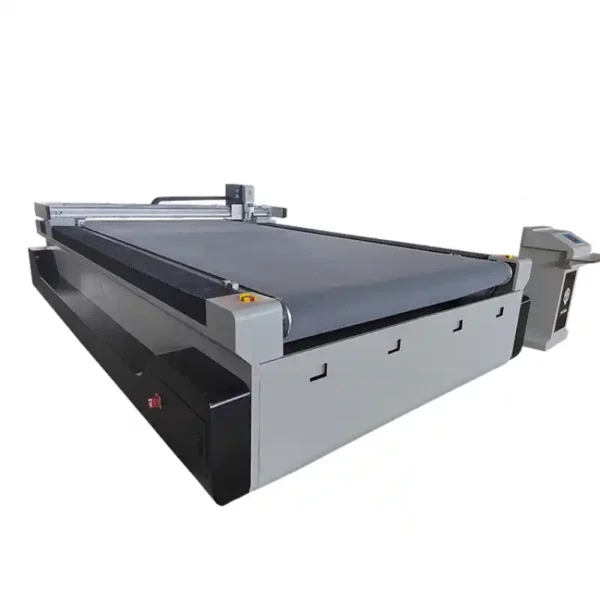Automated cutting machines contribute to achieving high levels of precision in pattern matching through several key features and functionalities.
Here’s how they contribute to precision in pattern matching:
- Digital Pattern Recognition:
- Automated cutting machines often utilize advanced digital pattern recognition systems. These systems analyze digital patterns or templates, ensuring accurate identification and alignment of the cutting lines.
- Computer Numerical Control (CNC):
- CNC technology is commonly integrated into automated cutting machines. This allows for precise control of the cutting tool’s movement, ensuring that it follows the designated pattern with high accuracy.
- High-Resolution Imaging Systems:
- Some cutting machines are equipped with high-resolution imaging systems that capture detailed images of the material and the pattern. This information is then used to align the cutting tool precisely along the pattern lines.
- Precision Cutting Tools:
- Automated cutting machines are often equipped with precision cutting tools, such as laser cutters or blades with minimal tolerances. This ensures that the cutting process follows the pattern lines accurately without deviations.
- Automatic Nesting Algorithms:
- Automated cutting machines utilize automatic nesting algorithms to optimize the arrangement of patterns on the material. This optimization minimizes material waste and ensures that the patterns fit together seamlessly with high precision.
- Real-Time Corrections:
- Some advanced systems incorporate real-time correction capabilities. If any discrepancies or distortions are detected during the cutting process, automatic fabric cutting machine the machine can make immediate adjustments to maintain pattern accuracy.
- Dynamic Registration Systems:
- Dynamic registration systems help the cutting machine maintain alignment with the material. These systems continuously monitor and adjust the position of the material and the cutting tool to prevent misalignment and ensure precise pattern matching.
- Bar Code or RFID Technology:
- Bar codes or RFID (Radio-Frequency Identification) tags may be used to label and identify different pattern pieces. Automated cutting machines can read these codes to ensure that the correct pattern is matched, reducing the risk of errors.
- Vision Systems:
- Vision systems use cameras or sensors to capture real-time images of the material and patterns. These systems provide feedback to the cutting machine, allowing it to adjust and align the cutting tool with high precision.
- Integrated Software Solutions:
- Cutting machines often come with integrated software solutions that allow users to create, edit, and fine-tune digital patterns. These software tools include features for precise placement and alignment of pattern elements.
- User-Defined Tolerance Settings:
- Users can often set tolerance levels within the cutting machine’s software. This allows for customization based on specific project requirements, ensuring that the machine achieves the desired precision in pattern matching.
- Feedback and Calibration Systems:
- Automated cutting machines may feature feedback and calibration systems that continuously monitor and adjust the machine’s performance. Regular calibration ensures consistent precision in pattern matching over time.
- Multi-Tool Configurations:
- Some cutting machines offer multi-tool configurations, allowing for various cutting methods within the same machine. This flexibility enables the use of different tools for different pattern elements, optimizing precision.
- Material Handling Systems:
- Efficient material handling systems, such as conveyor belts or vacuum tables, contribute to maintaining material stability during the cutting process. This stability is crucial for achieving high precision in pattern matching.
By integrating these features, automated cutting machines provide a level of precision in pattern matching that is challenging to achieve consistently with manual methods. These technologies contribute to improved efficiency, reduced material waste, and enhanced overall accuracy in the cutting process.
